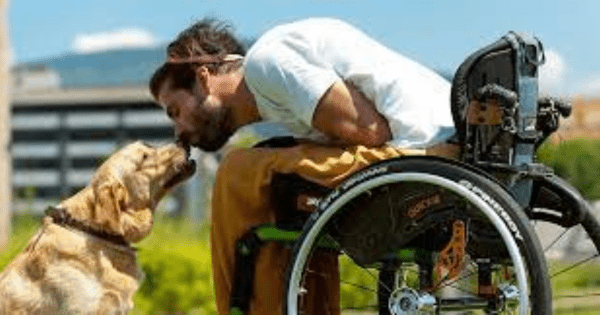Dogs have been serving humans for thousands of years, and their role has evolved over time. Today, dogs are not only our companions and protectors, but they are also trained to assist people with disabilities. These specially trained dogs are often referred to as service dogs.

For people with physical disabilities, service dogs can help with mobility and navigation. They can be trained to pull wheelchairs, open doors, and retrieve items. For people with hearing impairments, service dogs can alert their owners to important sounds, such as a fire alarm or doorbell.
For people with psychiatric disabilities, service dogs can provide emotional support and help alleviate symptoms such as anxiety and depression. They can be trained to recognize and interrupt harmful behaviors, provide deep pressure therapy, and even perform search and rescue operations.

Training a service dog is a lengthy and complex process. It can take up to two years to fully train a service dog, and the training is tailored to the specific needs of the owner. Dogs are carefully selected for their temperament, intelligence, and physical ability. They undergo extensive training in obedience, socialization, and task-specific skills.
The training is often conducted by professional dog trainers, who use positive reinforcement techniques to teach the dogs new skills. This can include treats, toys, and praise for good behavior. Dogs that show signs of aggression, fear, or anxiety are not suitable for service dog training.
Once a service dog is trained, they are paired with their owner and begin working together as a team. The owner is responsible for the care and maintenance of the dog, including feeding, grooming, and veterinary care. Service dogs are highly trained and are allowed to accompany their owners in public places, including restaurants, stores, and public transportation.

In recent years, there has been a rise in the use of service dogs for people with invisible disabilities, such as autism and mental health conditions. These dogs can help provide a sense of calm and safety for their owners, and can even help them navigate social situations.
They provide assistance, companionship, and independence, and help their owners lead more fulfilling lives.
It’s important to note that service dogs are not pets, but rather highly trained working dogs. They are not allowed to be petted or distracted while on duty, as this can interfere with their ability to perform their tasks.
In many countries, including the United States, service dogs are protected by law. The Americans with Disabilities Act (ADA) guarantees the right of people with disabilities to be accompanied by their service dogs in public places. This means that service dogs cannot be denied access to public places or charged additional fees, and their owners cannot be asked to provide proof of disability or certification for their dog.
However, it’s important to remember that not all dogs are suitable for service dog training. It’s a rigorous process that requires a significant investment of time and resources. It’s also important to respect the rights of service dogs and their owners, and not to interfere with their work.
In conclusion, service dogs are amazing animals that play a critical role in helping people with disabilities live full and independent lives. Through their specialized training, they provide assistance, companionship, and emotional support to their owners.
SEE ALSO: Dog rescues owner from house fire
